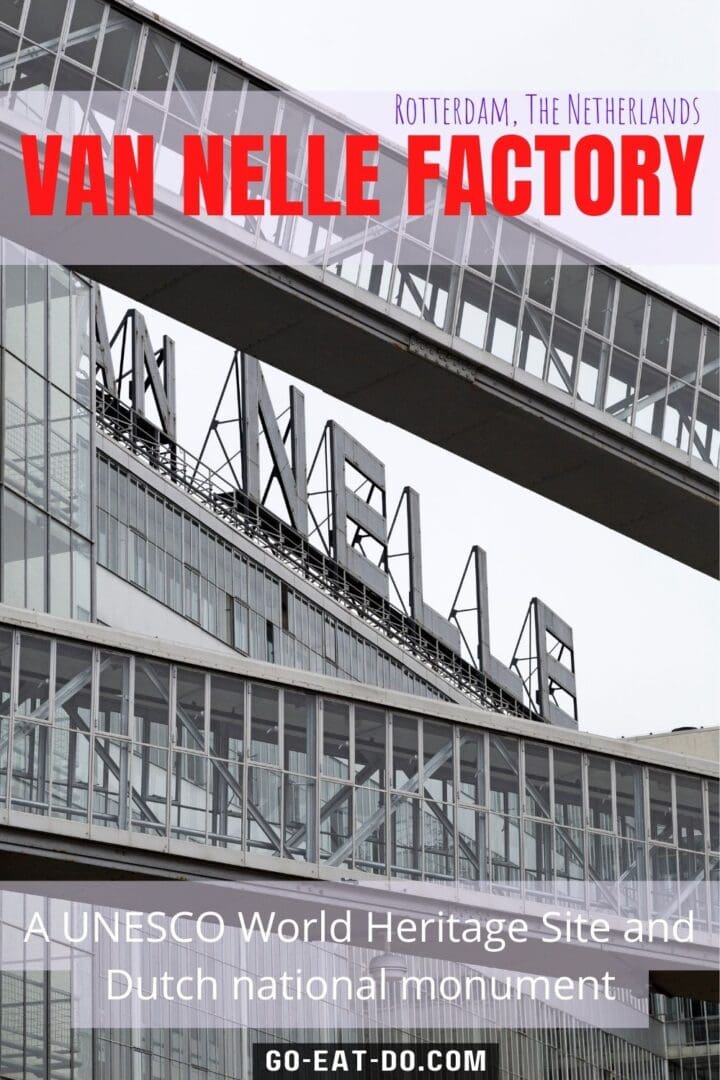Stuart Forster heads to the Netherlands and reports from Rotterdam’s UNESCO Van Nelle Factory, a masterpiece of 20th-century Dutch Functionalist design.
Disclosure: Some of the links below and banners are affiliate links, meaning, at no additional cost to you, I will earn a commission if you click through and make a purchase.
On 21 June 2014 the Van Nelle Factory, located in Rotterdam’s northwestern Spaanse Polder district, became the Netherlands’ tenth UNESCO World Heritage Site.
Perhaps it’s fitting that the inscription took place on the longest day of the year as one of the key considerations during the building’s protracted design phase was for the interiors to make optimal use of natural light.
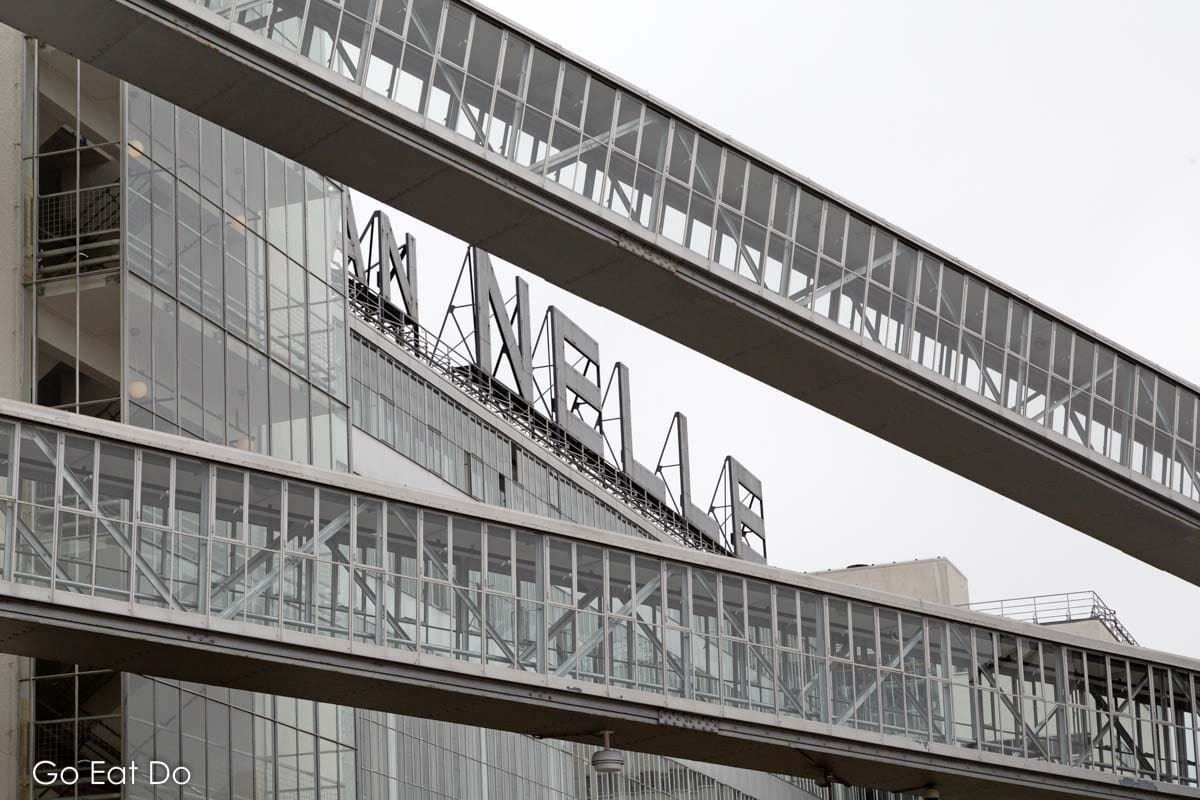
Dutch Modernism
The factory complex was built to process and package coffee, tea and tobacco. It fulfilled that purpose for 64 years, from 1931 to 1995.
The company, whose name it bears, was founded in Rotterdam by Johannes van Nelle in 1782.
What makes the site truly remarkable is the careful planning that went into every aspect of the design. Leendert van der Vlugt of Rotterdam’s Brinkman and Van der Vlugt architectural bureau was its architect.
The factory was commissioned in 1923 and is regarded as a leading example of Dutch Functionalist design.
A thoroughly modern workplace
When the Van Nelle Factory opened it was seen as an ideal workplace. Conditions for the 1,200 employees were good. The workplace was brighter and more spacious than most factories of the inter-war period.
Employees could make use of changing rooms and washrooms with showers before starting work. We now take such facilities for granted but they were then progressive. These factors helped make Van Nelle a popular employer.
On a practical level, those facilities facilitated a hygienic environment and enabled high-quality products to roll off the production line.
An icon of industrial architecture
“The site is one of the icons of 20th-century industrial architecture,” according to UNESCO’s description of why the building was selected as representative of our planet’s cultural heritage.
The elegant design was described effusively as “a poem in steel and glass” by architect Howard Robertson, who travelled through Europe and North America during the 1920s and 1930s. He documented contemporary architecture with the photographer Frank Yerbury.
The factory’s aesthetics meant it was soon regarded as archetypal of international Modernist architecture.
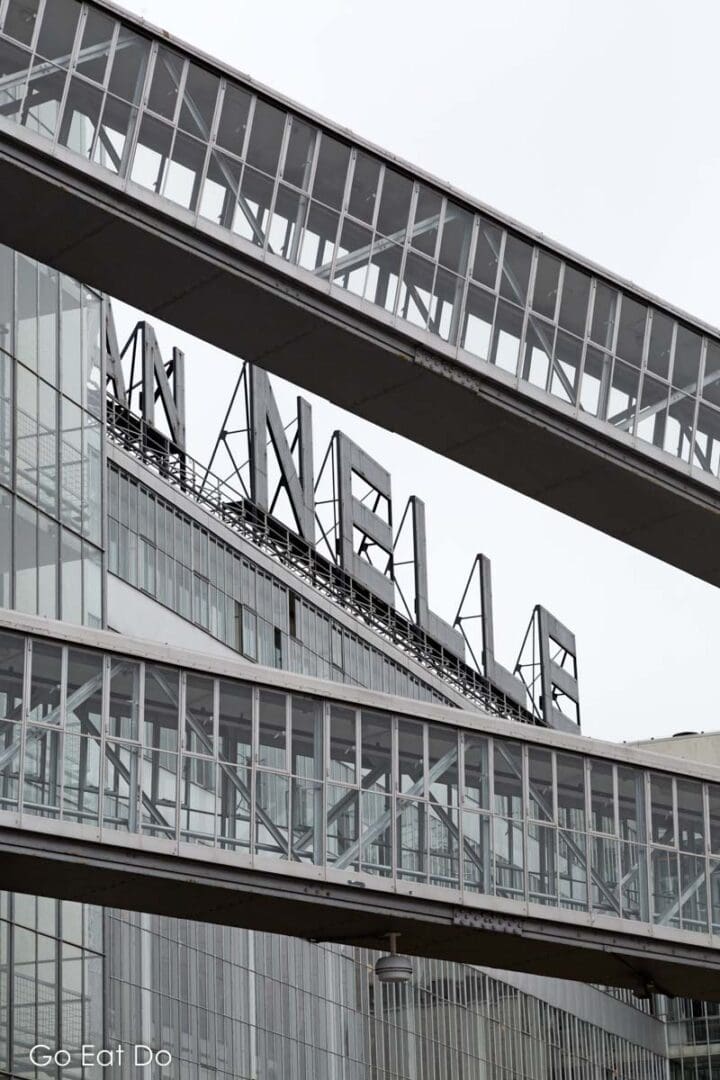
Dutch national monument
The significance of the building has long been recognised within the Netherlands. Since 1985 it has been a listed national monument.
After the production lines closed in the mid-1990s, questions were raised about how best to preserve the complex, whose structure was constructed using reinforced concrete by the civil engineer Jan Gerko Wiebenga.
In 1998, plans were drawn up to use the former factory as business premises. It now provides office space for more than 80 companies and is a conference and event venue. Up to 5,000 delegates can attend events held in 12 rooms with more than 10,000 square metres of floor space.
Leendert van der Vlugt
Extensive renovations were carried out to the property between 2000 and 2006.
The environmental credentials of the site were enhanced but the integrity of the original structure was retained. Even before green thinking became fashionable, practical considerations for maximising efficiencies had a strong influence on Leendert van der Vlugt’s design.
Form and function were intrinsically interlinked. The areas once used for processing tea, coffee and tobacco have different heights. Each floor of the factory was utilised for a different step in production. Blending tobacco had more steps (eight) than packaging coffee (five) or tea (three). This explains why the tobacco packaging zone is the highest in the Van Nelle Factory, with eight storeys.
Aspects of the factory’s design
Among the first things that visitors to the site notice are sloping bridges, containing a conveyor mechanism, for transporting wares through the factory. They are practical yet aesthetically integrated into the building’s form. Another corridor, wide enough for just one person, runs along the factory, enabling coffee to be quality controlled without exposing the olfactory senses of the tester to the aroma of tobacco.
Male and female employees used separate staircases, with chrome handrails, to climb to their workplaces. Equality awareness means we now frown upon systems that accentuate gender differences. The staircases sweep past each other within airy wells.
They gave the men and women of the factory a chance to cast their eyes over colleagues heading in the opposite direction. It’s said numerous romantic relationships began on the staircase, helping foster contentment and stability in the workforce.
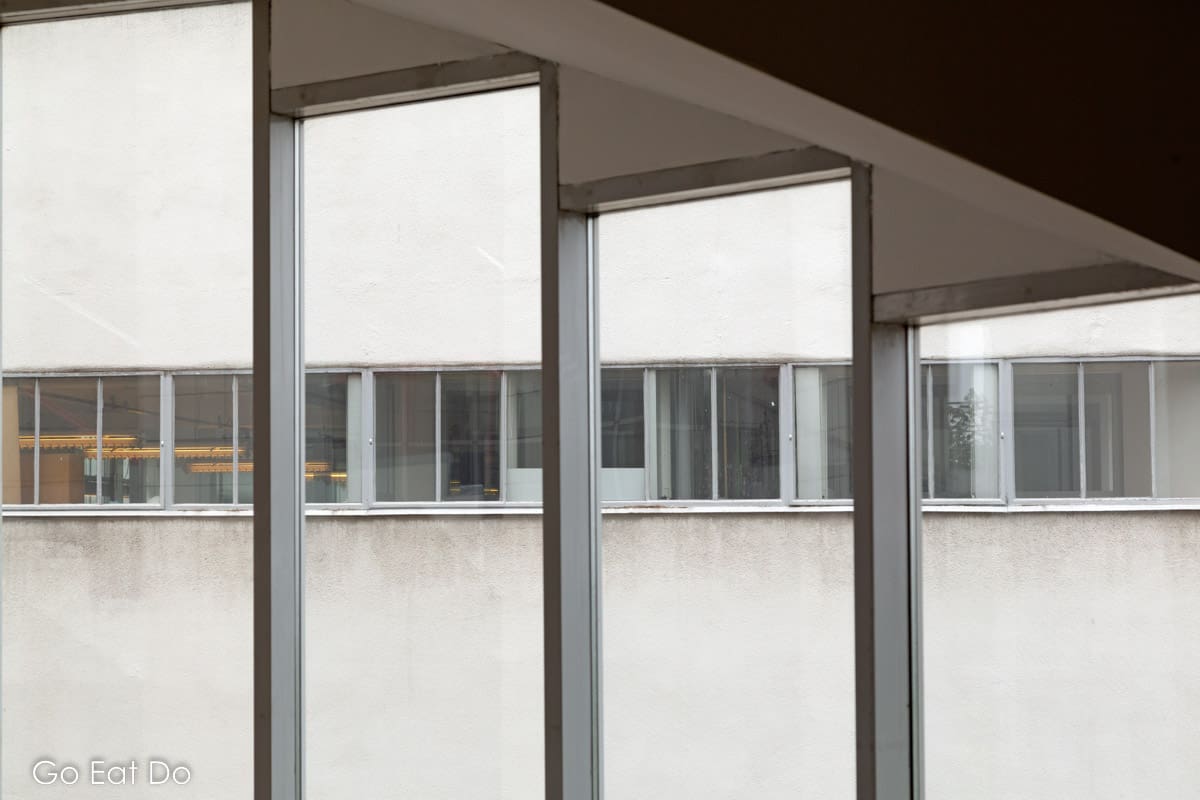
Rotterdam’s UNESCO Van Nelle Factory
By contrast the Van Nelle Factory’s three directors – Kees van der Leeuw, Bertus Sonneveld and Matthijs de Bruyn – could drive into garages directly below their offices. Today is fairly normal but it was ground-breaking in the 1930s when few people owned cars. The directors’ office windows provide an overview of the site, which is surrounded by lawns.
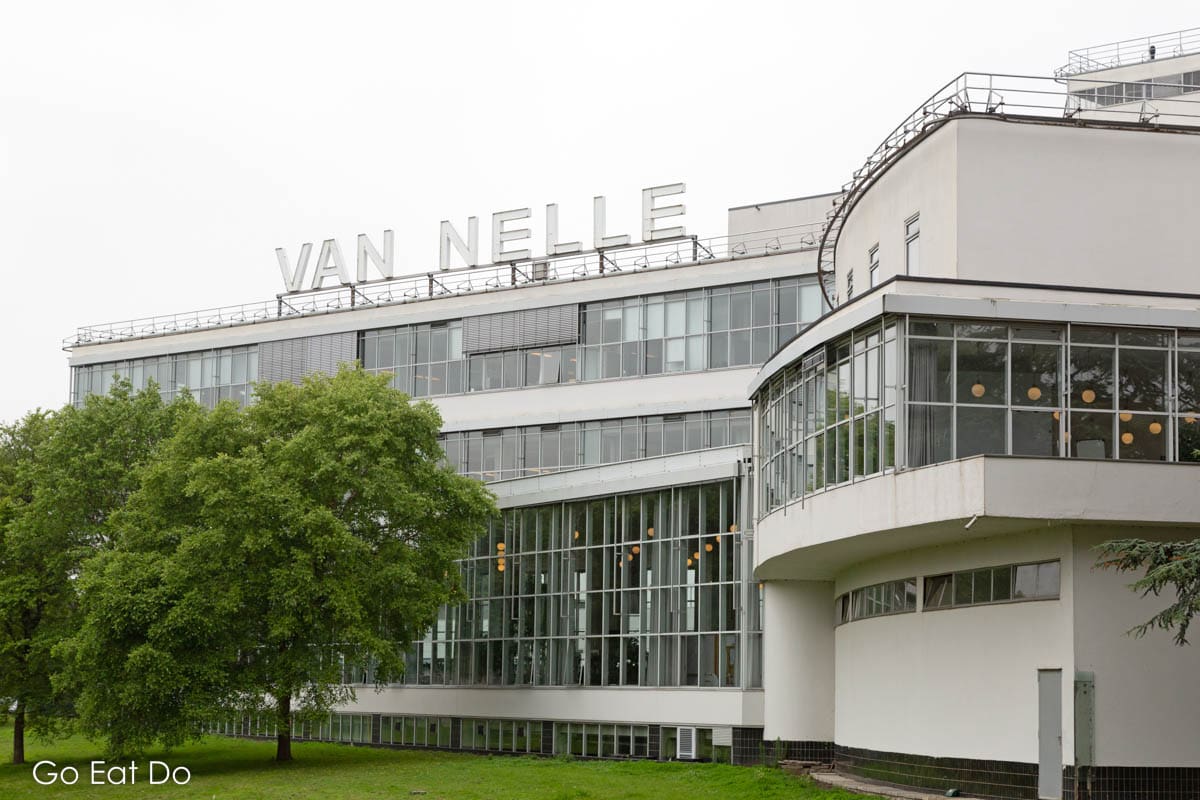
From the upper storeys of the factory workers could look down to the Delfshavense Schie canal, whose proximity is no coincidence. Raw materials, imported from the Netherlands’ colonies, were transported along the waterway from Rotterdam’s docks. In cold weather water from the canal was heated and then piped around the factory.
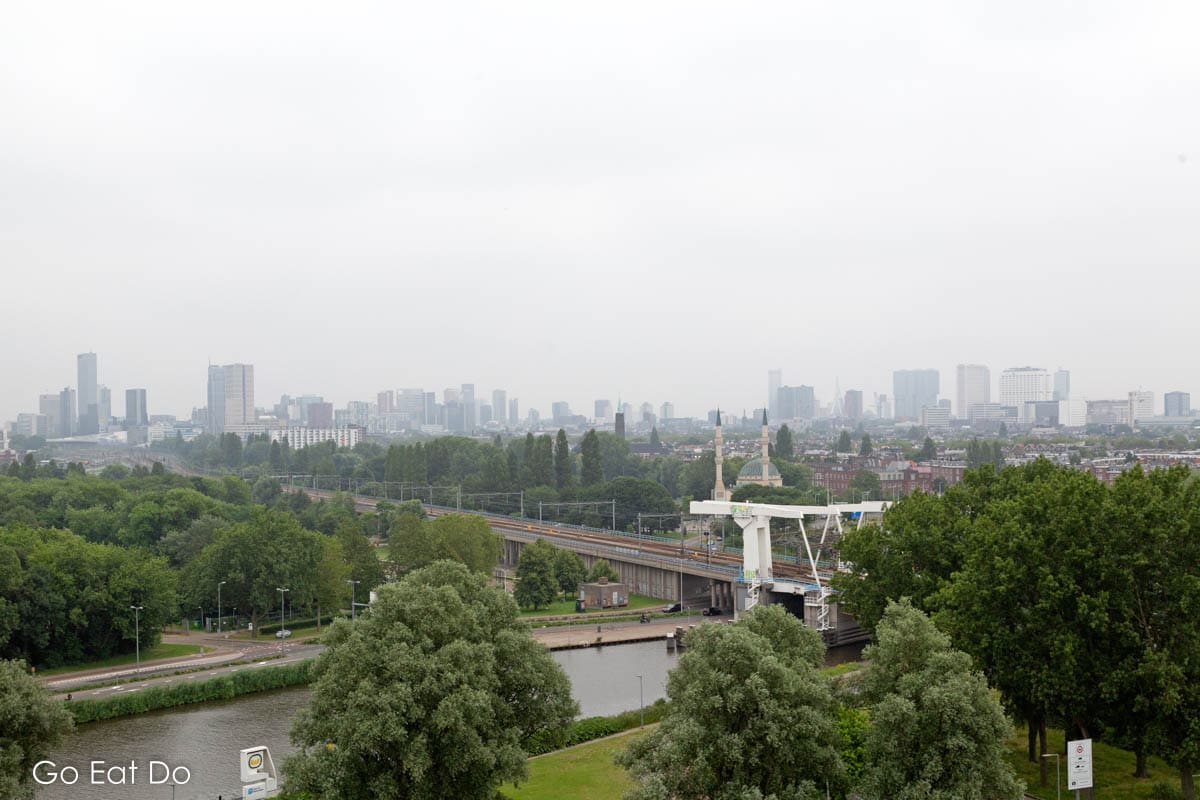
On warm days the factory’s greenhouse-style windows still open in either direction, depending upon the breeze. Swivelling on their hinges, only half of the glass’s weight hangs outside the building. This minimised the cost and weight of the frames and helped engender an airy workspace. Off-set, north-facing rooftop windows above the coffee sorting floor maximised the natural light available to workers selecting beans according to their colour.
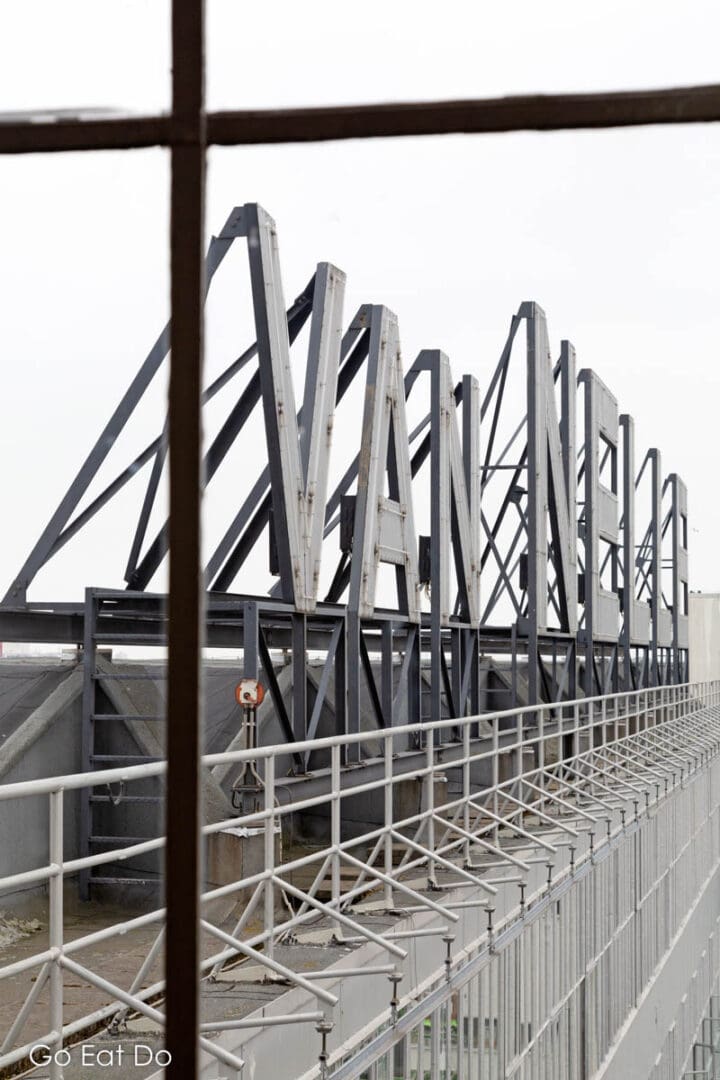
Neon lighting from New York
The roof bears a neon sign which reads ‘VAN NELLE’ in red capitals. It was shipped from New York City in 1932 and is symbolic of the international modernism of the factory below. The architect Michael Brinkman, who first sketched that now feted form to paper, died suddenly, in 1925.
Considering the functionality of all aspects of the design resulted in the factory’s construction taking six years. An example of this is the presence of wedge-like curves next to doors with rollers on their underside, ensuring the heavy doors are closed in a controlled manner with the aid of gravity, minimising both noise and the risk of fire. The simplicity of such a solution is part of its ingenuity.
The Van Nelle Factory is a thought-provoking example of Dutch Functionalist architecture and the building is worth travelling to see.
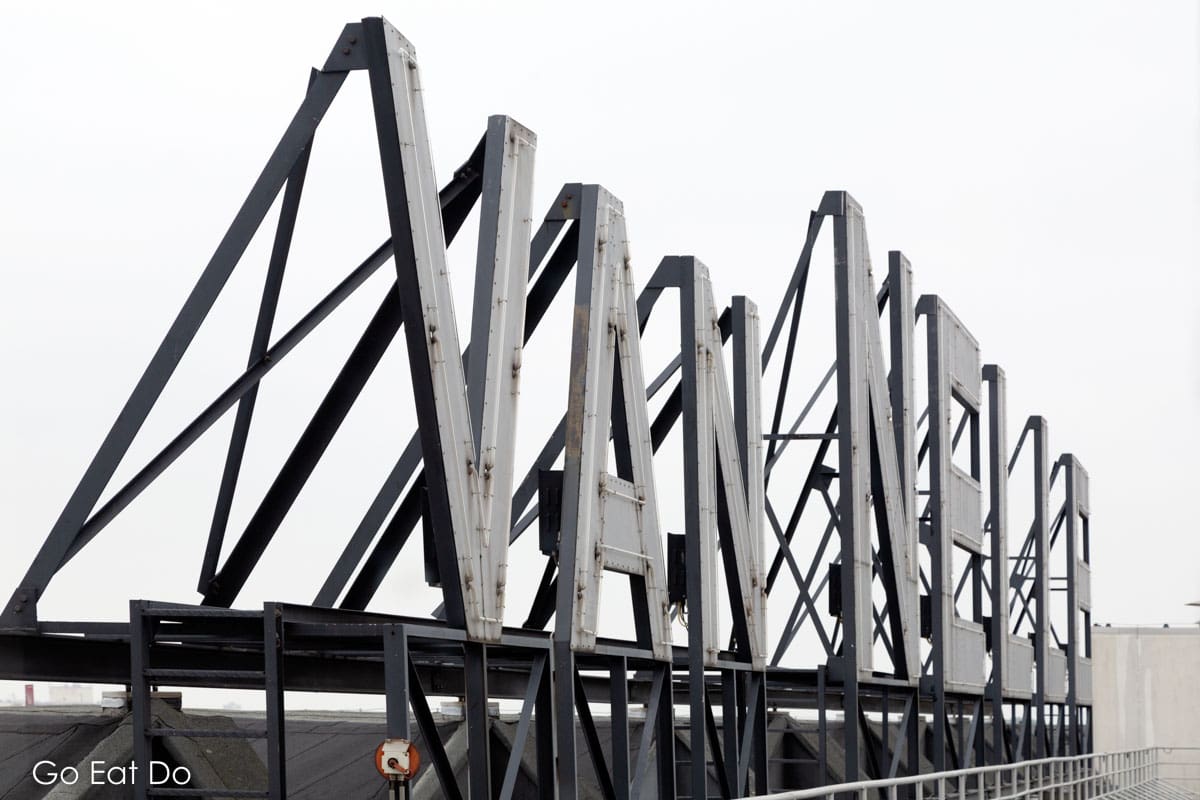
Travel to Rotterdam
The Eurostar terminal at Rotterdam’s Centraal Station means that rail travel is a viable way of travelling from London St Pancras International. The rail journey takes three hours and 13 minutes.
Amsterdam Airport Schiphol is the Netherlands’ principal international airport. Intercity direct services between Schiphol and Rotterdam take as little as 25 minutes. Rotterdam The Hague Airport has flights to and from London City Airport.
The DFDS Ferry from Newcastle to Amsterdam (Hook of Holland) lands you less than 30 minutes drive from the Van Nelle Factory in Rotterdam.
Travelling by public transport is an effective way of getting to the Van Nelle Factory from the city centre. Bus 38 runs between Rotterdam’s central station and the UNESCO World Heritage Site.
Map of the Van Nelle Factory
The map below shows the location of the Van Nelle Factory in Rotterdam, the Netherlands. Zoom out to see more of the city or in for more details:
Hotels in Rotterdam
Find and book accommodation in Rotterdam and elsewhere in the Netherlands via the HRS website:
Books about Rotterdam and Dutch Modernism
Keen to know more about Rotterdam and the architecture of the Van Nelle Factory? You can buy the following books from Amazon by clicking on the links or cover photos:
De Stijl and Dutch Modernism by Michael White:




Further information
Visit the Urban Guides website for information about the company’s guided tours of the Van Nelle Factory and to book a tour.
Find out more about the city on the Rotterdam Partners and Netherlands Board of Tourism and Conventions websites.
Stuart Forster, the author of this post, has studied and worked in the Netherlands. He was named Travel Writer of the Decade in the Netherlands Press Awards of 2020.
Photos illustrating this post are by Why Eye Photography.
Thank you for visiting Go Eat Do and reading this post about the Van Nelle Factory, a UNESCO World Heritage Site in Rotterdam, the Netherlands. Planning a trip to the Netherlands? Take a look at posts about art museums in the Netherlands. This A to Z of reasons to visit the Netherlands may convince you to visit.
If you enjoyed this post why not sign up for the free Go Eat Do newsletter? It’s a hassle-free way of getting links to posts on a monthly basis.
‘Like’ the Go Eat Do Facebook page to see more photos and content.
A version of this post was initially published on Go Eat Do on 12 March 2016.
